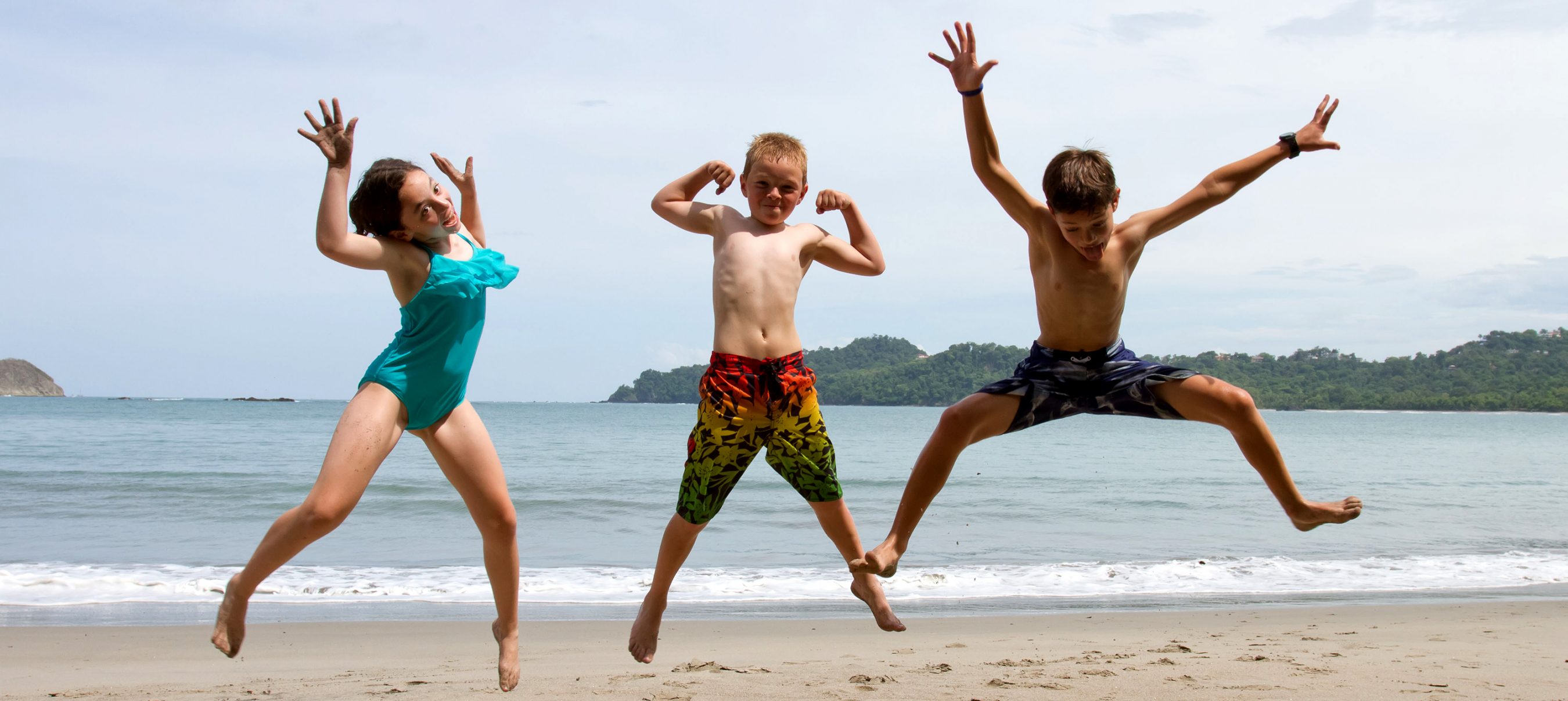Traveling with kids can feel daunting. Unpredictable schedules, long travel days and new foods can quickly create a stressful environment to navigate as a family. But instead of waiting until your kids are mature enough for a big vacation, choose a trip that works for your family—and don’t be afraid to try something new. You may discover your youngest is an excellent hiking leader or that your oldest has a surprising wealth of knowledge about sea life.
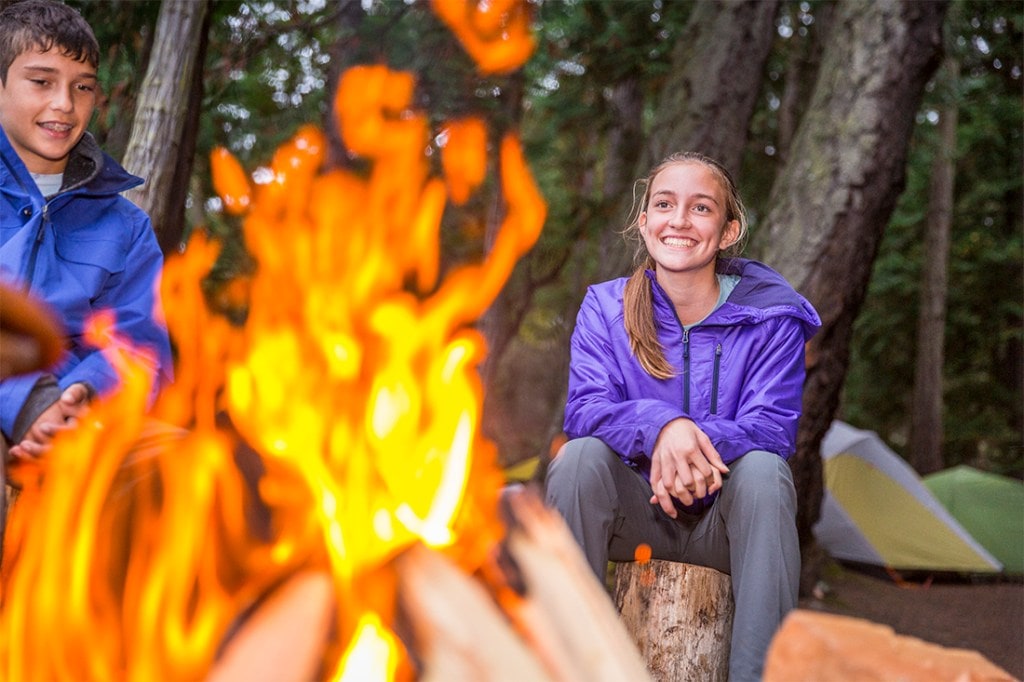
Fireside storytelling, roasting marshmallows and lifelong memories.
Whether you’re just starting to venture out a little further as a family or your kids are already seasoned travelers, this list of family-friendly trips will help you plan a long weekend, spring break or summer vacation that’ll be fun for everyone. By sharing your sense of adventure with your little ones from a young age, you’ll set them on a lifelong path of exploration—and hopefully it won’t be much longer before they’re carrying your backpack.
Kayak the San Juan Islands, Washington
Kayaking around the San Juan Islands is an exciting and family-friendly way to enjoy the natural beauty of the Pacific Northwest. Kids and parents alike will love the abundance of marine life—including otters, orcas and sea lions—in this archipelago.
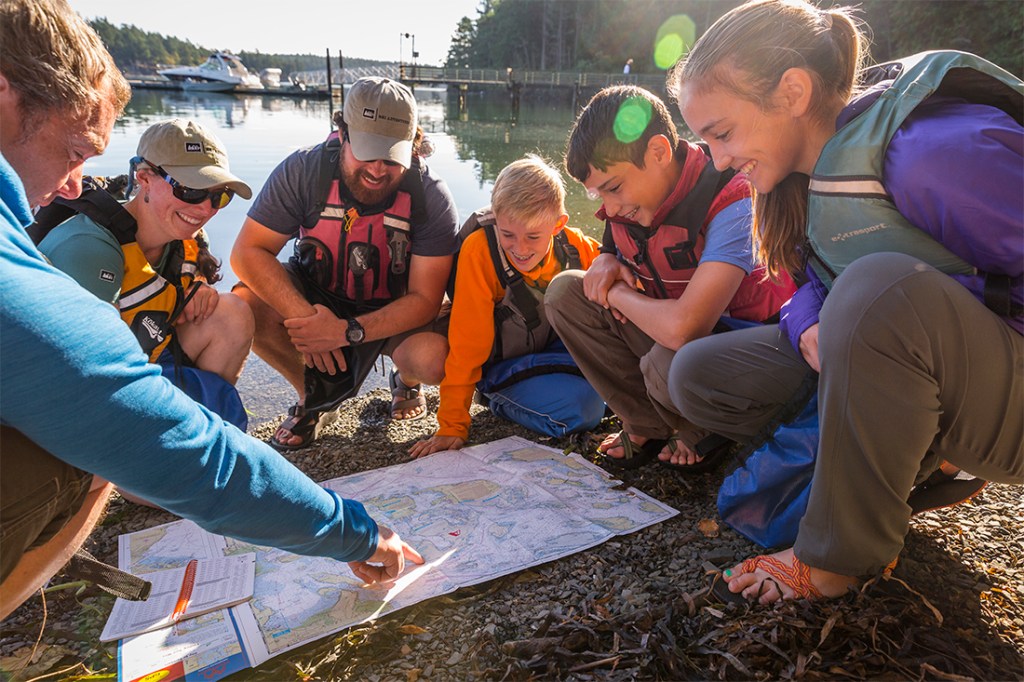
Kayaking in the San Juan Islands opens up a world of discovery and exploration for the whole family.
If you live in the Northwest, the San Juans make for an easy weekend getaway, a few hours by passenger ferry from Seattle or car ferry from Anacortes. Paddle between the shores of some of the region’s less populated areas and get close-up experience with sea stars, jellyfish and other underwater life. After exploring via kayak, hop on terra firma and cycle to San Juan County Park on the west shore of San Juan Island where your family can enjoy whale watching over a picnic lunch. Don’t forget to swing by the Whale Museum in Friday Harbor before or after your trip to learn all about the sea mammals in the area.
Walk Among Giant Sequoias in Yosemite
A walk through the giant sequoias in Yosemite National Park feels straight out of a Dr. Seuss book. The gargantuan trees rise higher than a 20-story building, with trunks as wide as 30 feet in diameter. The Mariposa Grove in Yosemite has over 500 giant sequoias, and is the largest grove in the park as well as the most accessible. Take a walk along the Grizzly Giant Loop, a two-mile trail with just 300 feet of elevation change that winds through some of the most notable giants in the Mariposa Grove. The trail’s namesake, the Grizzly Giant is the largest and oldest tree in the park, soaring 210 feet high and estimated to be at least 1,800 years old.
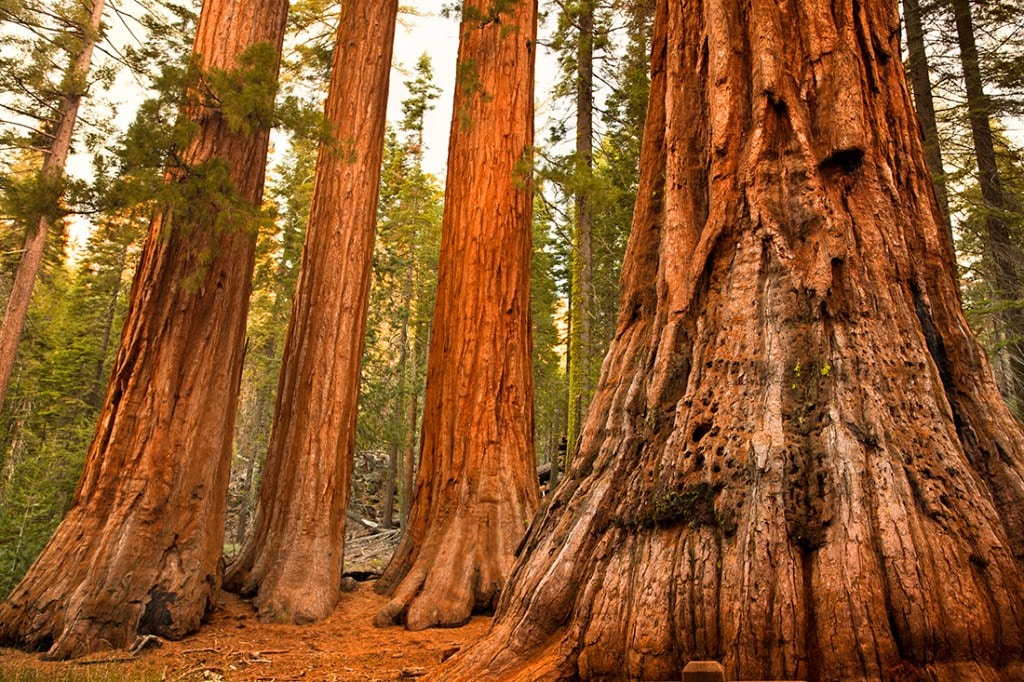
The giant sequoias of Yosemite seem even bigger during the spring of youth.
A family trip to Yosemite could include a stroll through the giant sequoias as well as plenty of family-friendly hikes around the iconic valley. For example, a morning hike along the Mist Trail drops you right at the foot of the famous 317-foot Vernal Falls followed by a casual stroll along the John Muir Trail. A short hike up to Sentinel Dome is a scenic evening excursion and will reward you with 360-degree views of El Capitan, Yosemite Falls and Half Dome. It’s a quintessential view of Yosemite Valley and a great place for a family photo at sunset.
Snorkel at Kahalu’u Beach Park, Big Island of Hawaii
Swim with tropical fish and sea turtles along the underwater reefs at Kahalu’u Beach Park. A breakwater (a submerged rock wall) keeps large waves and strong ocean currents away from the beach, making Kahalu’u Park ideal for kids and novice swimmers. In fact, locals refer to it as “Snorkel Beach” for the abundance of sea life close to the shore. The water is crystal clear (conditions dependent) and the fish are exceptionally comfortable around humans, letting you get up close and personal with over 100 different species of underwater creatures. Drawn by the plethora of seaweed, turtles frequent the warm, shallow water, so it’s not uncommon to see them.
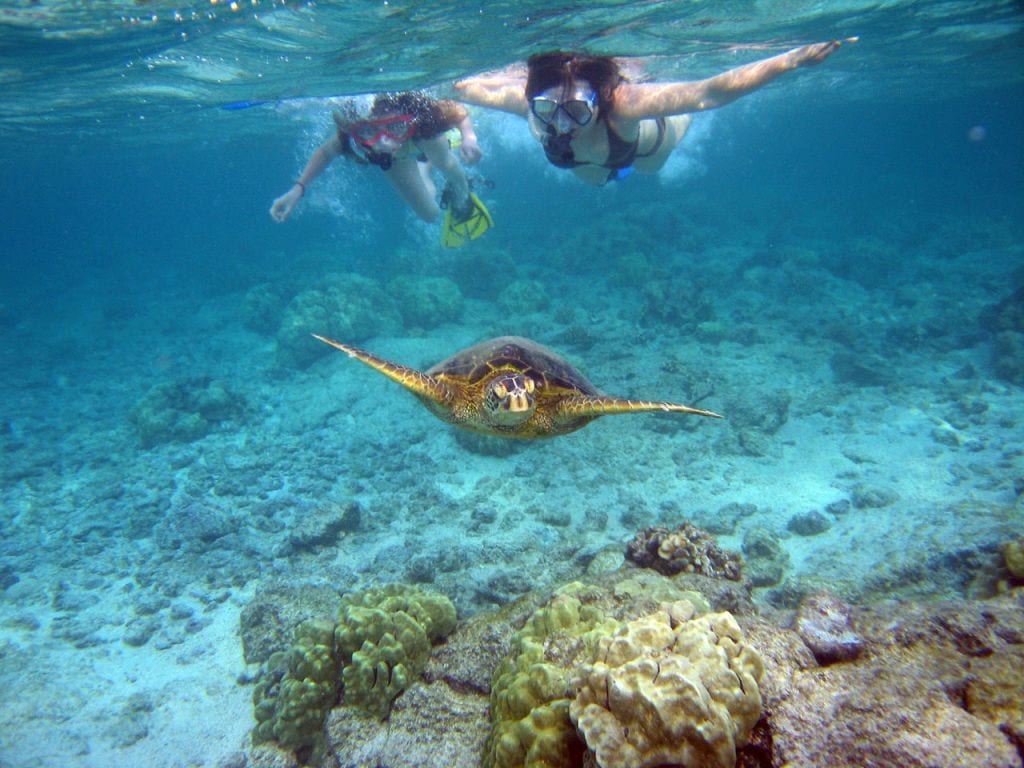
Whether young or old, snorkeling with turtles can be a magical experience. (Photo Credit: Vlad & Marina Butsky under CC BY 2.0)
Kahalu’u Bay Surf & Sea rents snorkel equipment, paddle boards and surfboards, so there’s no need to travel with your own gear. The beach park has showers and bathrooms as well as picnic tables. You’ll find a lifeguard on duty during the day and concession stands that sell burgers and shaved ice.
Raft the Rogue River, Oregon
There aren’t many family trips you can take that are equally as relaxing for adults as they are entertaining for young kids, but the Rogue River in southern Oregon walks this line perfectly. The Rogue’s headwaters begin high in the Cascades, flowing through dense forests, farmlands, orchards and rugged canyons toward the Pacific Ocean. The classic multiday guided trip winds through remote wilderness sections of the Rogue River National Forest that are only accessible by boat. Class III whitewater and a single class IV rapid (Blossom Bar) keep things exciting, while long stretches of flatwater and side hikes offer a mellow escape when you’re ready to hop out of the boat. Kids will love paddling through gentle sections in the inflatable duckies and jumping off the rafts in the afternoon sun, while adults can kick back and leave all the decision making to the guides.

The thrill of whitewater rafting and the magic of exploring a wilderness area makes the Rogue River a top family travel destination. (Photo Credit: Morrison’s Rogue Wilderness Adventures)
The Rogue is one of the original eight rivers to receive Wild and Scenic status, created by Congress in 1968 to preserve and protect rivers in their free-flowing condition. Bald eagles and blue herons soar overhead while you camp along the shore on one of the Rogue’s many sand bars. And if camping isn’t your family’s preference, but you’d still like to experience all the Rogue has to offer, consider staying at one of the river’s wilderness lodges.
Visit Great Sand Dunes National Park and Preserve, Colorado
The vastness of Great Sand Dunes National Park and Preserve is almost overwhelming at first sight, a massive sandbox seemingly built for giants. Driving in, the dunes look strikingly out of place, a strange, sandy sprawl in the shadow of the 13,000-foot Sangre de Cristo Mountains. The colossal mounds of sand soar up to 750 feet in height, making them the largest dunes on the continent.
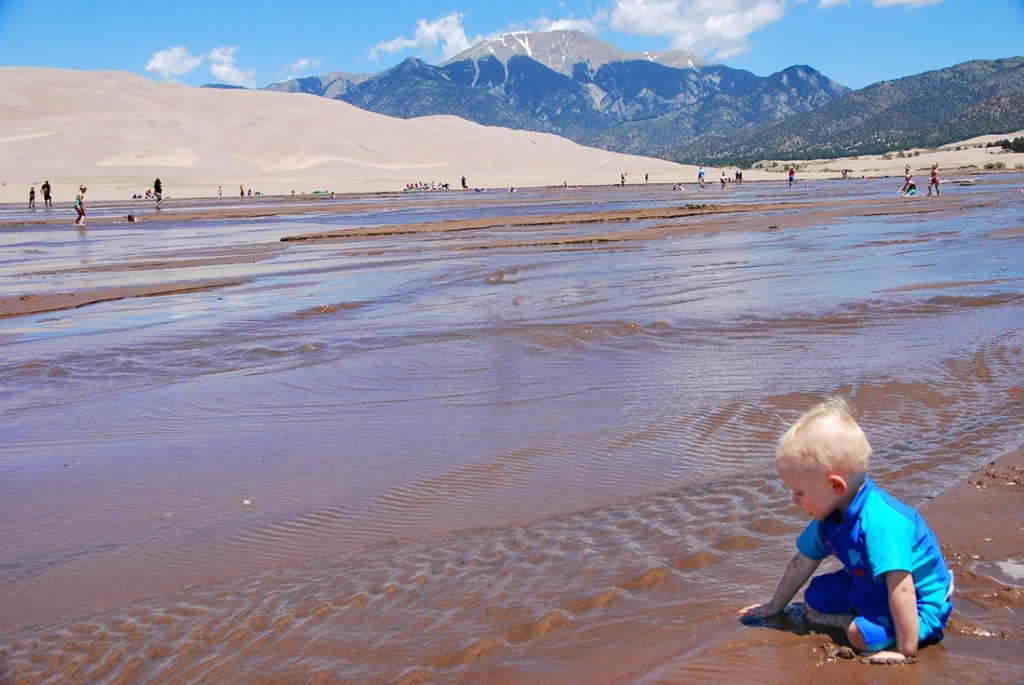
The Sange de Cristo Mountains loom large over the Great Sand Dunes. (Photo Credit: Great Sand Dunes National Park and Preserve under Public Domain)
A sandboard or sand sled (neither are for rent inside the park) is a fun way for kids to enjoy the simple freedom of the sand dunes, and the lack of defined trails allow kids to wander wherever they please. After a long walk in the sand, stop by Medano Creek to splash, float or tube through the shallow surge of snowmelt that flows along the southern end of the dunes.
It’s best to visit in the spring or fall, when high temperatures are in the mid 60s. In the heat of the summer, the sand feels like hot coals underfoot, making it tough to spend more than a few minutes in the dunes. The Piñon Flats Campground is close to the visitor center and offers great views of the dunes and the Sangre de Cristos. The campground is open April 3 through October 31 and has 88 individual campsites for tents or RVs.
Zip-line through the Rain Forest, Costa Rica
If you’re ready to venture a little farther out as a family, a trip to the Costa Rican rain forest is an exciting and kid-friendly way to explore a new country. Costa Rica’s diverse ecosystems offer a wide variety of recreation, with thrilling zip-line tours and picturesque beaches that will please family members of all ages. Plus, it’s an easy flight from most major U.S. cities, which means a relatively low chance of grumpy, jet-lagged kids.
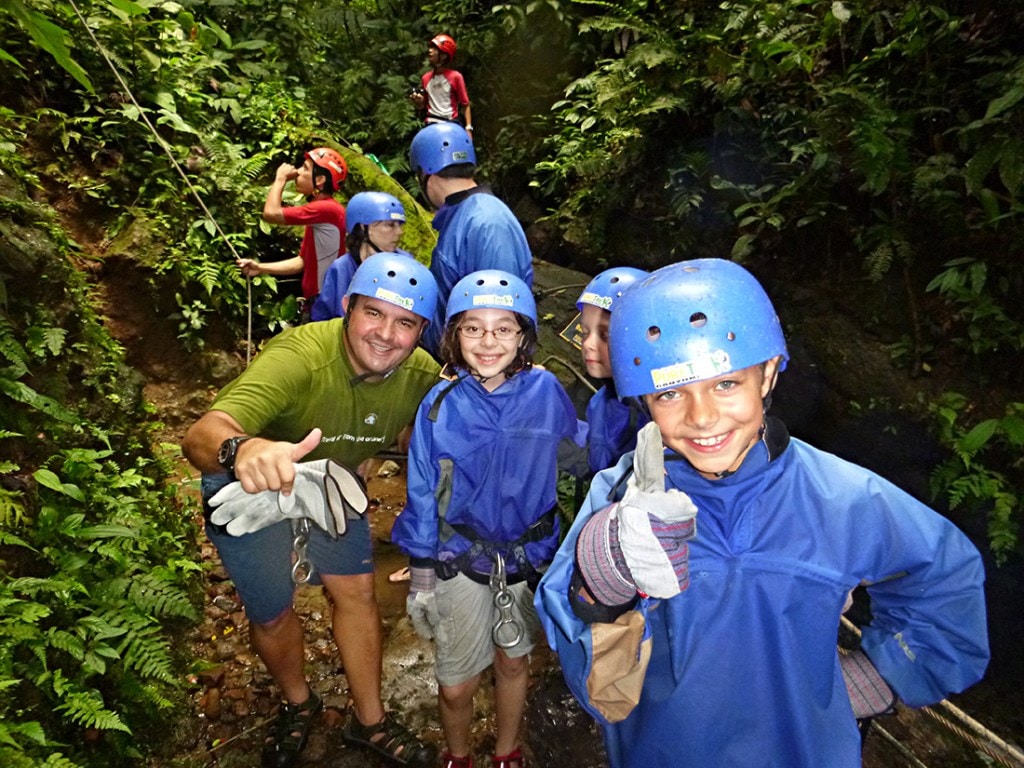
Introduce your kids to a dose of adventure in Costa Rica.
Most will agree that one of the best ways to enjoy the vibrant colors of Costa Rica is from the treetops. A family trip to Costa Rica can be jam-packed with zip-lining, hiking, canyoning, and surfing. The rain forest in Arenal Volcano National Park offers some of the best opportunities for zip-lining, with sturdy steel cables that stretch anywhere from 35 to 1,500 feet through the dense emerald forest. Viewpoints high up in the trees peek through the canopy to stunning views of the 5,437-foot Arenal Volcano, which until 2010 was Costa Rica’s most active volcano. Once your feet are back on the ground, enjoy a hike to Fortuna Waterfall, an afternoon raft trip along the Balsa River or a walk to one of the many hot springs in the area.
Spot Wildlife on a Safari, Tanzania
An African safari may seem like a big leap for a family trip, but most safari tours take care of all the details, making it a surprisingly low-stress vacation as long as you can handle the air travel. The northern highlands of Tanzania are a great option for families, with incredibly diverse wilderness areas and small, intimate lodging options. Serengeti National Park in the northern part of the country is one of the largest and most well-preserved wildlife sanctuaries in the world, occupying close to 6,000 square miles of terrain. The Serengeti is best known for the great wildebeest migration, where up to two million wildebeest and over 200,000 zebra migrate more than 600 miles through the park and nearby game reserves spanning two countries, and back again.
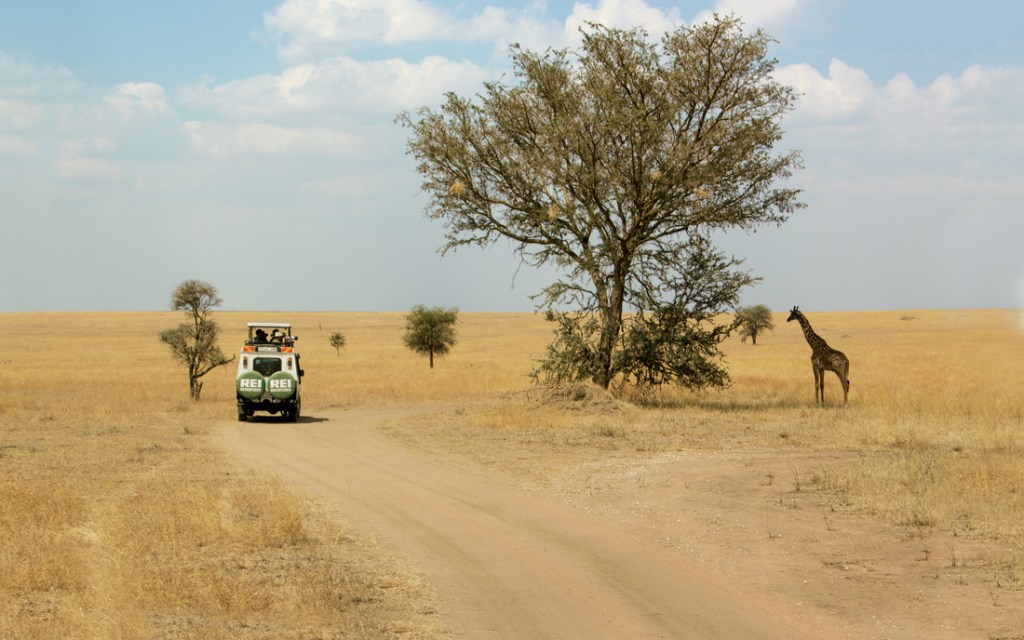
Regardless of age, discovering the megafauna of Tanzania makes for an exciting adventure.
The variety of wildlife you’ll see in the Serengeti is the stuff of storybooks. Lions are the only big cat in the world that live in prides, and the Serengeti is home to over 3,000 of these dominant creatures. Prides of up to 30 lions populate the grassy plains, with cheetahs, leopards and packs of hyenas filling out the top of the food chain. Hippos and elephants wallow in the shallow watering holes, and over 500 species of birds soar high above the grasslands.
Dry season in the Serengeti is from January through March or June through October and offers the best opportunities for wildlife viewing.
